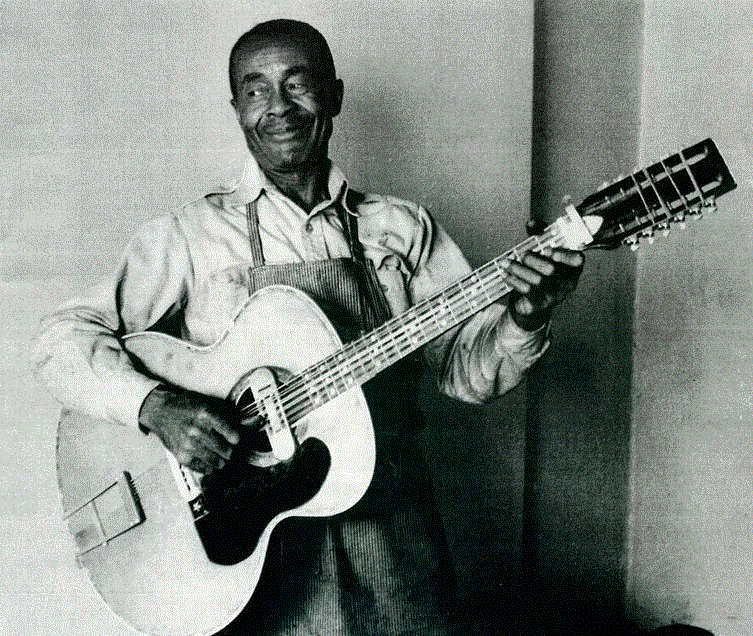Jesse Fuller – A Complete Biography
Introduction
Jesse “Lone Cat” Fuller (March 12, 1896 – January 29, 1976) was a Georgia-born, Bay Area–based one-man band whose blend of country blues, folk, ragtime, and vaudeville showmanship made him a fixture of the 1950s–60s folk revival. He’s best remembered for writing “San Francisco Bay Blues,” a standard recorded by artists from Peter, Paul and Mary to Eric Clapton, and for inventing the fotdella, a foot-operated string-bass instrument that let him accompany himself with pulsing bass lines while he sang, played 12-string guitar, harmonica, and kazoo.

Childhood
Fuller was born in Jonesboro, Georgia, near Atlanta, and was sent to live with foster parents at a young age, an experience he later described as harsh. As a child he worked odd jobs—at factories, a rock quarry, the railroad, and shining shoes—while teaching himself guitar techniques he called “frailing” and “picking.”
Youth
In the 1920s Fuller moved to Southern California, where he ran a hot-dog stand, befriended film star Douglas Fairbanks, and even worked as a movie extra (including The Thief of Bagdad, 1924). By 1929 he had settled across the bay from San Francisco in Oakland, taking jobs with the Southern Pacific Railroad as a fireman and gandy dancer; during World War II he worked as a shipyard welder. Music remained mostly a sideline—busking, entertaining at a shine stand—until the early 1950s, when he began to consider performing professionally.
Adulthood
Fuller crafted a stage persona as “The Lone Cat,” solving the problem of unreliable sidemen by becoming his own band. He designed and built the fotdella, a foot-played, six-stringed box bass, letting him thump out bass lines while fingerpicking guitar and singing—often adding harmonica and kazoo mounted on a neck rack. The ingenuity and joyous groove of the setup made him a local favorite in San Francisco, Oakland, and Berkeley and a draw on Bay Area and Los Angeles television.
In his early sixties he finally recorded widely: albums for Good Time Jazz and other labels beginning in 1958 showcased his repertoire of blues, work songs, spirituals, ragtime, and standards, delivered with jokes, dance breaks, and soft-shoe moves. Fuller’s Bay Area legend grew into national and European touring during the folk boom; younger musicians (including Bob Dylan, who observed Fuller’s neck-rack harmonica approach in 1959) picked up both tunes and techniques from him.
The Smithsonian now preserves his 1962 Silvertone acoustic-electric—a Sears-sold guitar he famously bought in a Detroit store after another was stolen—and highlights his innovation with the fotdella.
Major Compositions
Fuller’s signature song is “San Francisco Bay Blues.” He first recorded it in 1954 (issued 1955), and it quickly became a folk-revival staple with dozens of covers in the 1960s and beyond—by Ramblin’ Jack Elliott, Peter, Paul and Mary, Richie Havens, Tom Rush, and later Eric Clapton (notably on his 1992 Unplugged album). The tune’s easy swing, walking bass, and bittersweet lyric gave it unusual longevity across folk, pop, and jazz settings.
Other well-known pieces associated with Fuller include “The Monkey and the Engineer” and “Beat It On Down the Line,” songs adopted by the Grateful Dead in concert—one measure of Fuller’s reach from street corners to rock stages.
Death
Jesse Fuller died of heart disease in Oakland on January 29, 1976, aged 79; he is buried at Evergreen Cemetery in Oakland. His instruments—especially the fotdella and his Silvertone—have become touchstones for museums and collectors, tangible reminders of a self-made American original.
Conclusion
Fuller’s life traces a classic American arc: from Jim Crow Georgia to West Coast industry and, ultimately, to artistic self-invention. As a late-blooming professional who hit his stride in his sixties, he embodied persistence; as a one-man band who engineered his own sound, he embodied ingenuity. “San Francisco Bay Blues” endures as a folk-blues standard, and the fotdella stands as a symbol of how necessity—and vision—can reshape musical possibility. In clubs, coffeehouses, and on records that continue to circulate, Jesse “Lone Cat” Fuller remains a bridge between early 20th-century work songs and the cosmopolitan folk revival, his music still shuffling forward on the steady steps of a foot-played bass.

Comments are closed